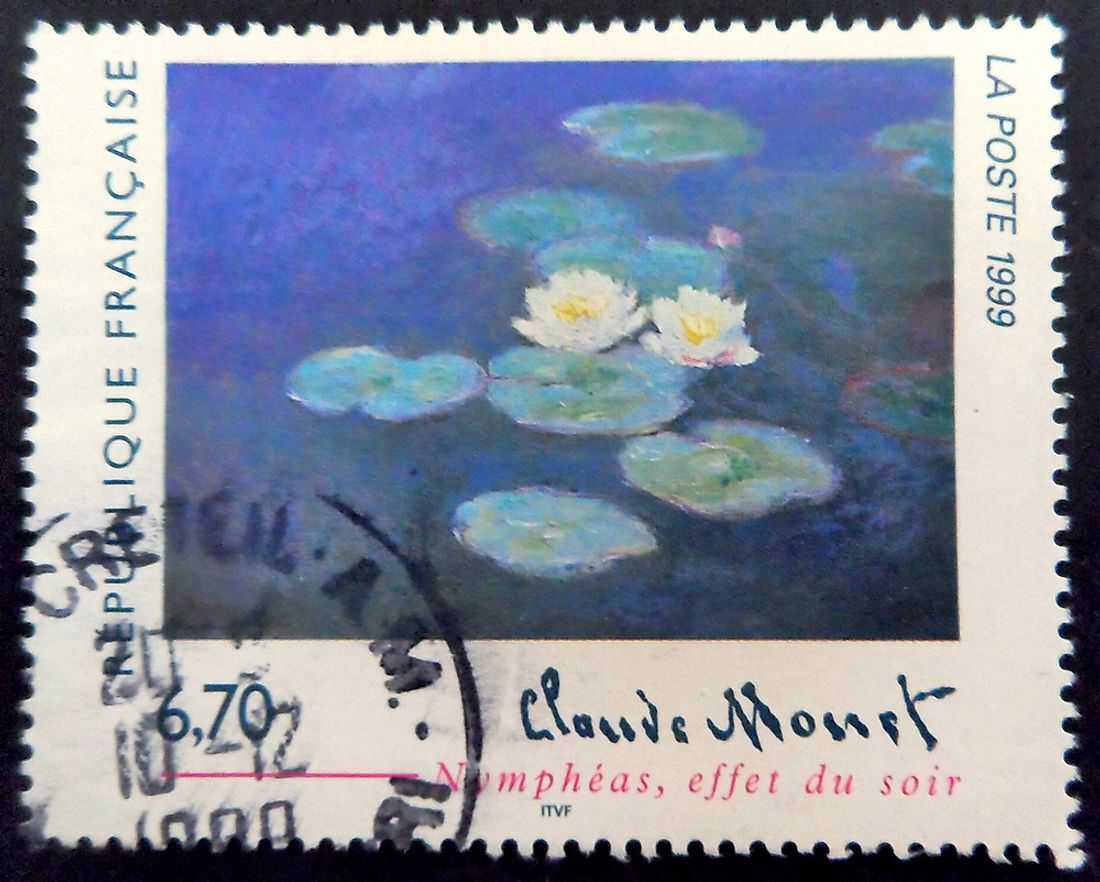Famous Artwork: Water Lilies

The artwork of Water Lilies is a series of paintings worked on by 19th and 20th century French impressionist painter, Claude Monet. The “Water Lilies” series is made up of about 250 individual paintings painted between 1897 and 1926 in the sunset years of Claude Monet. All the paintings are based on water lilies which Claude Monet had planted on his large estate in Giverny. The painter worked on most of these paintings after cataracts altered his eyesight. The early paintings in the series featured a Japanese bridge and were in the form of vertical views.
Background of the Artist
The Water Lilies painting is one of the many works of art credited to Claude Monet, a renowned French painter. Oscar-Claude Monet was born on November 14th, 1840 in Paris to Claude Adolphe Monet and Louise Aubree Monet. Monet’s mother encouraged the young painter to pursue a career in art, and hence Claude Monet enrolled at the Le Havre School of the Arts in April 1851. However, Claude Monet received more skills in painting while under the tutorship of other established painters such as Jacques-Francois Ochard, Charles Gleyre, and Eugene Boudin. Claude Monet then established himself as one of the most sought after painters in Paris with his 1872 painting entitled “Impression, Sunrise” became the basis of the Impressionism movement of the late 19th century. Monet had married his first wife, Camille Doncieux in June 1870 who would later die in September 1879. The painter later married his second wife, Alice who died in 1911. In his twilight years, Claude Monet developed cataracts which affected the quality of his paintings. Claude Monet died in December 1926 and was buried in the Giverny church cemetery.
Period of the Painting
Claude Monet purchased a large house in Giverny in 1890 (which was later converted into a public historical estate) and established a lush flower garden in the compound. The painter also had diverted water from River Epte to flow into the flower garden. Monet later bought additional land where in 1893 began establishing lily ponds on the existing water meadow. Claude Monet planted local lilies but also imported lilies from as far as Egypt and South America. These lily ponds became the basis of the “Water Lilies” series of paintings. Claude Monet worked on his Water Lilies series between 1897 and 1926. The earliest painting in the “Water Lilies” series was a painting entitled “Nympheas” which Claude Monet worked on between 1897 and 1898. The last painting in the series was the “Water Lilies” painting which the painter worked on between 1920 and 1926.
Legacy of the Painting
After the death of Claude Monet in 1926, the government of France established two oval rooms in the Musee de l’Orangerie to house eight paintings from the “Water Lilies” series. A special exhibition was later held in 1999 at the Musee de l’Orangerie which saw 60 paintings of the “Water Lilies” series being showcased.
Current Location of the Painting
The paintings of the “Water Lilies” series are housed in numerous art institutions and museums all over the world including the Musee de l’Orangerie, the Art Institute of Chicago, the National Museum of Wales, the Portland Art Museum among many other locations.
Financial Worth
Paintings in the “Water Lilies” series are some of Claude Monet’s most famous paintings and are among the highest valued paintings in the world. One painting in the series was sold at a London auction held in June 2008 for $30.96 million, surpassing another painting which was sold for $23.86 million in a London auction held in June 2007.











